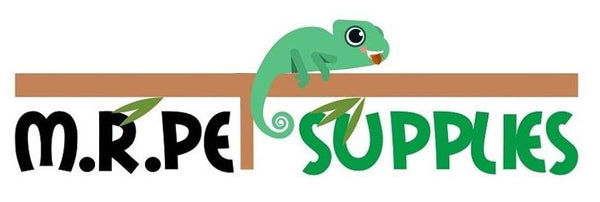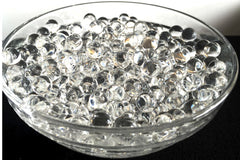Dubia Roach Care
Blaptica dubia, the Dubia roach, also known as the orange-spotted cockroach,[2] Guyana spotted cockroach,[3] or Argentinian wood cockroach,[4][5] is a medium-sized species of cockroach which grows to around 1.6–1.8 in. These roaches have been raising in popularity for that last few year as feeders for a variety of reptiles, amphibians, arachnids and fish. The higher protein content combined with the easy to digest chitin shell make Dubia Roaches highly sought after and a greater alternative to the most common staple feeder the Banded Cricket. Dubia Roaches are much easier to keep than crickets(and they dont smell). They have more positive nutritional benefits than super worms and mealworms!
Click To buy Live Dubia Roaches
HIGHLIGHTS
|
Optimal Choice of Insect Feeder
|
Highly Nutritious food for your pets
|
ATTENTION: M.R. Pet Supplies DOES NOT recommend starting your own dubia roach colony. It is common for people to develop a serve allergy to dubia roaches with too much handling, improper ventilation and constant exposure. You might save money long term, but it may not be worth the risk to your or your families health. Handling your dubia roaches in a well-ventilated room, and wearing gloves and a mask can help reduce the chances of developing an allergy. Please be aware that the reactions will start with itchy skin, and then move on to itchy eyes, congestion, and may lead to respiratory issues. Let M.R. Pet Supplies supply your dubia roaches, as you need them with minimal exposure and risk of developing allergies.
HOUSING
Dubia roaches need to be held in containers with smooth sides so they are not able to climb out of their enclosure. This species of tropical roach are not known to climb, they will be able to use rough-surfaces and walls as toeholds and may reach the top of the enclosure. To avoid them escaping place a layer of Smoothed out tape or layer of petroleum jelly along the inside top edge. Glass aquariums, plastic totes / tubs (18 – 30 Gal.), or Plastic insect carriers with ventilated lids can be used. Although the roaches cannot climb, it is wise to cover their enclosure so unwanted materials, pests or household pets cannot get in. Aquariums can be covered with mesh screen covers used for reptiles. Most plastic tubs are sold with heavy-duty plastic covers. In order to provide ventilation for a plastic tub, cut a hole in the cover, at least 6”x6” and hot-glue some vinyl mesh over the opening, you can also use a strong adhesive tape
Here is a good link to a good way to have them setup. It can be scaled as needed.
http://feederinsectbreeding.blogspot.com/p/dubia-roach-care-and-breeding.html

Dubia roaches need places to stand and places to hide. Cardboard egg crate flats provide the surface area per square inch. You may be able to get egg crate flats from a local farms or stores or store like Walmart or you can buy them from our supplier here at eggcarton.com. M.R. Pet Supplies recommend stacking the egg crate flats vertically so the Dubia roach droppings fall to the bottom of the housing. Make sure that the cover is on tight and that the egg crate does not extend so close to the top of the enclosure that the roaches can crawl out, a good inch from top edge to top of egg crate is ideal.
HEAT AND HUMIDITY
Although Dubia roaches can survive at room temperatures of 60-70 F, they require an ambient temperature of 85-95 F to successfully breed, and do best with about 60% humidity. If you have an area of your home that naturally reaches the required temperature there is no need for an additional heat source. If heat is needed, it can best be provided by using a Ceramic Heat Emitter, a Heat Mat or coated heat cable. The ceramic heat emitter should be installed at the top of the enclosure to radiate heat downward; the Heat Mat can be attached to the side or bottom of the enclosure. If the Heat mat is to be placed on the outside bottom of the enclosure, be sure to raise the tub or tank at least 1/4" to vent the heat if they are over 10watts. In order to control the temperature of the Heat Mat and to prevent an overly hot Heat Mat from melting a plastic housing, use of a thermostat or a lamp dimmer to keep the temperature in the low to mid 90's.
The warm temperatures and use of water crystals for hydration or regular root veggies (see below) should lead to appropriate humidity. There is no need to use any kind of substrate or bedding at the bottom of the enclosure, as the frass builds up the dubia roaches will dig and hide in the layer that develops.
FOOD AND WATER
Providing great nutrition and adequate hydration result in healthy Dubia roaches, which means great food for your pets. Healthy Dubia roaches provide a large array of great nutrition to the animals that feed on them (click here for a chart). Dubia Roaches can eat a variety of dry fruit, grain or plant-based food including what is commonly called Roach chow, powdered grains, commercially available insect gutload, a variety of fruits and vegetables, especially orange ones which contain carotenoids (NOTE that do not gut load citrus for feeding some lizard species as this can be harmful to them.). Low moisture vegetable parings such as potato or other parings, apple cores or broccoli stalks. Be sure to remove fruit and vegetables before they get moldy (typically root veggies 12-24 hours and leafy veggies 8-15 hours; mold is lethal to roach colonies. Avoid high protein foods such as dog or cat food and meat, since Dubia roaches convert excess protein into uric acid that can harm the reptiles that eat them. 14-16% Protein is ideal for dubia roaches.
CLEANING
Dubia Roaches droppings are called “frass". The enclosures will need to be cleaned every 2-4 weeks to reduce buildup of frass and shed exo-skeletons; this can be extended with the purchase of cleaning crew beetles sometimes called buffalo beetles or Dermestid (taxidermy) beetles. This can be extended to 6-8 weeks easily. As long as there is not a sweet smell, pest invasion and you are removing any remain food scraps after 12-15 hours.
It is useful to have an extra enclosure when cleaning. Transfer the egg crate flats with the Dubia Roaches and the food and water dishes (which may contain roaches as well) to the extra container. Scoop up what remains at the bottom of the enclosure and sift out the frass. The roaches that remain can then be transferred to the extra enclosure, or put back into the original enclosure with the other materials.
SIFTING THE FRASS
Drilling 1mm holes in the bottom of a 5-gallon bucket have an additional 5-gallon bucket to collect the frass in; can help with separating the frass from the roaches. Note that having some frass is good for the younger dubia roaches, but too much can cause mold and disease issues if much gets wet. This will stop the roaches from crawling through the holes and being tossed out. Frass is a great garden fertilizer or soil amendment that can be composted.

IMPORTANT PLEASE READ
Please be aware that some people can develop allergies to Dubia roaches without proper airflow and ventilation. This can happen without warning and seems to increase with more exposure to their frass (excrement). This is more likely to occur if you are breeding roacheswithout proper ventilation, since it will dramatically increase the intensity of contact. The best way to avoid developing an allergy is to handle your Dubia roaches in a well-ventilated room, and wear gloves and a mask if possible.
MATERIALS RECOMMENDED FOR DUBIA ROACH CARE
- Glass Aquarium or plastic tote / tub (at least 18-30 Gallon) (for smaller temporary feeder holding small plastic insect cages with ventilation slits.)
- Ventilated Enclosure cover (vinyl mesh and hot glue gun needed if converting a plastic tub cover)
- Ceramic Heat Emitter, Heat Pad or Heat Cable Rope (note we recommend the Heat Mat)
- Thermometer or Thermostat or Lamp Dimmer (Most of our Heat Pads have dimmers)
- Egg crate flats
- Water crystals ( recommended to not use with unprocessed oats click here for colony pets and issues)
- Roach food or veggies (click here for a list of great veggies and an inexpensive dubia roach chow)
- Shallow bowls or plastic cups with an opening
- Extra Tub to use when cleaning
Interested to know more about facts about the Dubia roaches?
Check out this Wikipedia article https://en.wikipedia.org/wiki/Blaptica_dubia


